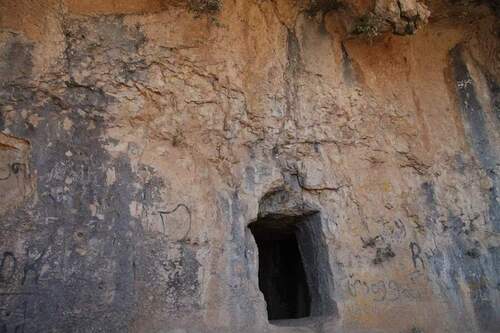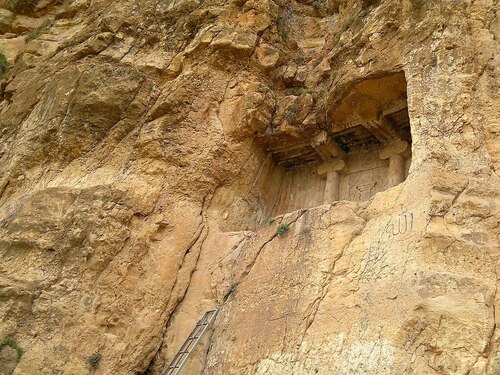Kurdistan is one of the most historical places in the world and from any point of view of its geography and history, we see unique points. Unfortunately, because we Kurds do not have an independent entity and do not have advanced government institutions, they have not been studied in detail. On the other hand, the invaders have not only tried to invade our geography but also tried to distort our history.
In this article, by briefly introducing the most important caves in the southern part of Kurdistan, I would like to say that Kurdistan is not only one of the most historical places in the world but the place of the formation of the first civilizations. For instance, geological research has shown that the Zagros Mountains were formed during the Paleocene, 65 million years ago.

Hazarmerd Cave
This cave is located 13 kilometers south of Sulaimani. The entrance of the cave is 12 meters wide on the outside, 15 meters on the inside, and 5 meters high on the inside, but the depth to the inside is 30 meters. The first archaeologist to excavate it was Ms. Kardo, who worked there between 1951 and 1961. After her efforts, she found several stone objects dating back to 50,000 BC. As for its name, it is believed to come from its greatness, for it accommodated a thousand men.
Hazarmerd Cave is the second largest cave in the southern part of Kurdistan after Shanadar Cave. This cave is near the village of Hazarmerd, which is a very old village, and was moved to a lower place due to the plague.

Shanadar Cave
This cave is located in the southern part of Mount Bradost in the Great Zab Valley and near Shanadar village in northeastern Erbil. The cave is 2,100 feet above sea level and the width of the entrance is 25 meters outside and 35 meters inside. However, it is 8 meters high inside and 40 meters deep inside. Neanderthal skeletons dating back 45,000 to 60,000 years have been found in the cave. Several remains of skeletons of sheep, goats, and turtles have also been found there.
The first expert to excavate the cave was Ralph Sulkey between 1951 and 1961. In 2019, several skeletons dating back more than 100,000 years were found in the inner layers of the cave after excavations.
Zrzi Cave
This cave is located in the Surdash area of Sulaimani province and is located near the two caves "Qazqapan and Kurukch" which were researched by an American expert named "Cowherd" in 1927. Several stone tools dating back 12,000 years have also been found there.

Kurukch Cave
This cave is an artificial cave located near the cave of Qazqapan, where two graves have been found, one of which is believed to be the grave of the Median king Fraurtis.
Kurukch Cave is a rectangular shape facing north. The cave is 6.60 meters long, 2.60 meters wide on the right, and 2.40 meters wide on the left. There is a small room in the middle of the cave, 115 centimeters high and 35 centimeters wide. On the right side of the room, a grave was dug out of the rock, 40 centimeters deep and one meter wide. The remains of two pillars also remain attached to the ceiling but are missing on the ground. This cave is similar to Qazqapan in shape and may have been built at the same time.

Qazqapan Cave
This cave is located on Mount Sarsad near the village of Surdash, where an inscription is carved and several graves dating back to 550-600 BC have been found.
The cave is dug 10 meters high into a mountain and has Median paintings on its walls. It is about 50 kilometers from the center of Sulaimani. The cave has a small entrance that is lower than human height. Inside the room, there are three small graves one meter high with historical artifacts found in them.








